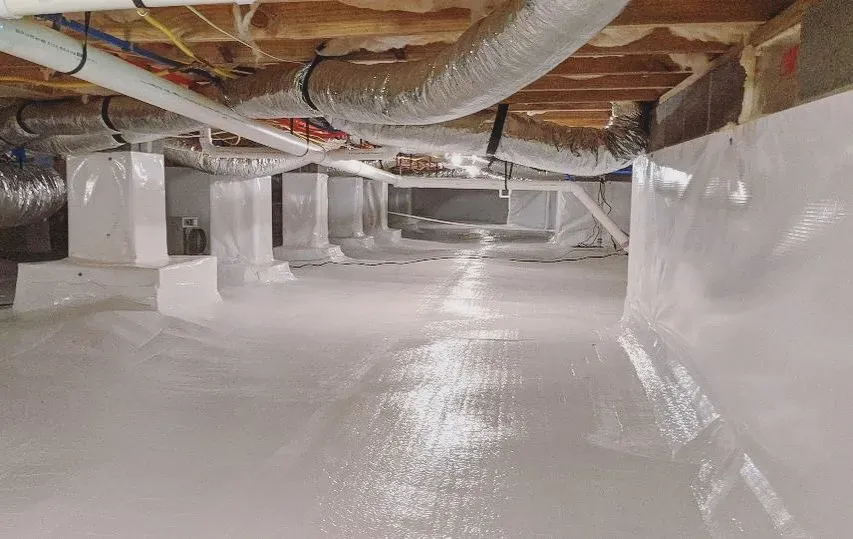
Homeowners often look for ways to protect their crawl spaces from moisture damage. Two common solutions are crawl space encapsulation and vapor barriers. While both methods help manage moisture, they serve different purposes and vary in effectiveness. Understanding the differences between them can help homeowners make informed decisions about safeguarding their homes from mold, structural damage, and poor air quality.
Crawl space encapsulation is a comprehensive moisture control solution that involves sealing the entire crawl space with a thick, durable liner. This method creates a controlled environment that reduces humidity, prevents mold growth, and enhances energy efficiency.
A vapor barrier is a less extensive moisture control measure designed to reduce, but not eliminate, ground moisture from rising into the crawl space. It typically consists of a thin polyethylene sheet laid on the ground without fully sealing walls or vents.
| Feature | Crawl Space Encapsulation | Vapor Barrier |
| Moisture Control | Comprehensive | Partial |
| Air Quality Improvement | Significant | Limited |
| Energy Efficiency | High | Minimal |
| Mold Prevention | Highly effective | Somewhat effective |
| Installation Complexity | Professional installation recommended | DIY-friendly |
| Cost | Higher upfront cost | Lower cost |
| Lifespan | Long-lasting | Shorter lifespan |
The choice between encapsulation and a vapor barrier depends on factors such as climate, budget, and long-term goals. If you need a long-term, high-efficiency moisture solution, encapsulation is the better investment. If you are looking for a budget-friendly way to manage minor moisture issues, a vapor barrier may be sufficient.
Uncontrolled crawl space moisture can lead to serious issues, including:
Investing in professional moisture control services ensures effective and long-lasting protection. A professional inspection can determine whether encapsulation or a vapor barrier is the best fit for your home. Contact Premier Insulation Plus at (850) 600-4402 or email [email protected] for expert guidance on crawl space solutions.
A properly installed encapsulation system can last 20 years or more, depending on maintenance and environmental conditions.
Yes, a vapor barrier can be installed as a DIY project, but professional installation ensures better coverage and durability.
Yes, crawl space encapsulation can increase home value by improving air quality, energy efficiency, and preventing moisture-related damage.
Yes, a dehumidifier helps maintain proper humidity levels, preventing condensation and mold growth.
No, a vapor barrier only reduces moisture from the ground but does not seal out all humidity.
The cost varies based on the size of the crawl space and materials used, typically ranging from $5,000 to $15,000.
It’s recommended to inspect your crawl space at least once a year for signs of moisture, mold, or pest activity.
Yes, but closed-cell spray foam is preferred, as it acts as both insulation and a moisture barrier.
Over time, vapor barriers may degrade and should be replaced every 5-10 years depending on wear and tear.
Signs include musty odors, high indoor humidity, visible mold, and sagging floors.